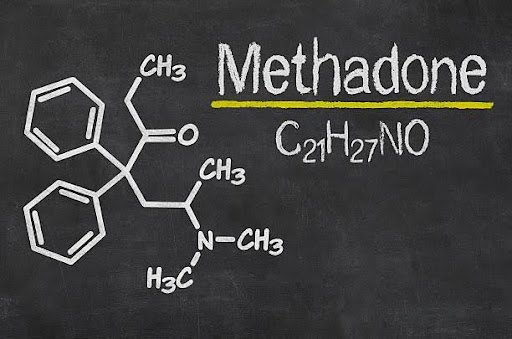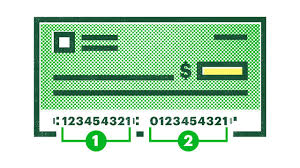Methadone Detox Timeline: What to Expect During Withdrawal

Deciding to detox from methadone is a significant and often challenging step toward recovery. Methadone, a synthetic opioid, is commonly used in medication-assisted treatment (MAT) for opioid addiction. While effective in managing withdrawal symptoms from stronger opioids, methadone itself can be physically and psychologically addictive. Understanding the Methadone Detox Timeline can help you prepare for the withdrawal process and manage your expectations during detoxification.
Whether you’ve been using methadone to treat opioid addiction or pain management, the detox journey can be complex and varies greatly from person to person. This article breaks down the typical withdrawal timeline and what you can expect in terms of symptoms, duration, and severity.
What is the Methadone Detox Timeline?
Methadone has a long half-life, which means it stays in your system longer than many other opioids. Because of this, withdrawal symptoms may not start until 24 to 36 hours after the last dose. The Methadone Detox Timeline generally unfolds over weeks or even months, depending on various factors like the dosage, how long you’ve been taking it, and your overall health. Here’s a general breakdown of what you might expect:
First 24-36 Hours
The first signs of withdrawal typically start within one to two days after your last methadone dose. However, compared to other opioids like heroin, the onset is slower due to methadone’s long half-life. Early symptoms during this phase might include:
Anxiety
Restlessness
Muscle aches
Sweating
Yawning
The severity of these initial symptoms is usually mild but can increase as the body begins to adjust to the absence of methadone. Staying hydrated and getting plenty of rest can help during this stage.
Days 3-7: Peak Withdrawal Symptoms
The most intense phase of withdrawal tends to hit around day three and can last up to a week. During this time, symptoms peak and may feel overwhelming. It’s important to note that withdrawal is not just a physical process but also affects mental health. Common symptoms include:
Intense cravings for methadone
Nausea, vomiting, and diarrhea
Chills and shivering
Irritability or aggression
Insomnia
Abdominal cramps
Joint and muscle pain
Psychologically, you may feel anxious, depressed, or even experience mood swings. This is when support—whether from medical professionals, loved ones, or a support group—is most crucial. It’s during this phase that people are at the highest risk of relapse due to the discomfort and cravings.
Week 2: Subacute Withdrawal
Once the peak has passed, many people notice a decrease in the intensity of their symptoms, although they may still feel physically weak and mentally drained. Cravings can persist, and you may still experience:
Fatigue
Anxiety or depression
Trouble sleeping
Reduced appetite
At this point, it’s vital to focus on nutrition, hydration, and sleep. Emotional support during this stage is essential, as the psychological challenges of detox can still be significant.
Weeks 3-4: Tapering Off Symptoms
By week three, most physical symptoms should start to fade, though psychological symptoms like anxiety, depression, and cravings can linger. Many people still feel mentally foggy and struggle with fatigue, but this is often the point when they begin to see the light at the end of the tunnel.
Therapies like cognitive-behavioral therapy (CBT) or motivational interviewing can be helpful in managing mental health during this period, especially if post-acute withdrawal syndrome (PAWS) begins to set in.
Post-Acute Withdrawal Syndrome (PAWS)
For some, symptoms can persist for months after the initial detox phase. This is known as Post-Acute Withdrawal Syndrome (PAWS), which includes ongoing issues like:
Mood swings
Irritability
Sleep disturbances
Lack of motivation
Cravings
PAWS can last for several months and varies greatly from person to person. The key to managing PAWS is staying connected with healthcare providers and support groups to avoid relapse.
Managing Methadone Withdrawal
Methadone detox can be extremely challenging, especially without professional medical assistance. Some people choose to taper off methadone gradually under the supervision of a doctor, which can significantly reduce the intensity of withdrawal symptoms. Tapering involves slowly reducing the dosage over weeks or months, allowing your body to adjust.
Here are some additional ways to manage methadone withdrawal symptoms:
Hydration and Nutrition: Drinking water and eating nutritious foods can help mitigate symptoms like nausea and fatigue.
Over-the-Counter Medications: Medications like ibuprofen or acetaminophen can relieve aches and pains.
Emotional Support: Therapy or support groups are invaluable for managing cravings, depression, and anxiety.
Exercise: Light physical activity can help improve your mood and combat withdrawal fatigue.
Frequently Asked Questions (FAQs) About Methadone Detox
Q1: How long does methadone stay in your system?
Methadone can remain in your system for several days due to its long half-life, which ranges from 8 to 59 hours. It can be detected in urine for up to two weeks, depending on various factors like metabolism and dosage.
Q2: Can I detox from methadone at home?
While some people attempt to detox from methadone at home, it’s highly recommended to do so under medical supervision. Detoxing at home can be risky due to the severity of withdrawal symptoms, and there is a high chance of relapse without proper support.
Q3: How long does methadone withdrawal last?
The physical symptoms of methadone withdrawal typically last for three to six weeks, with the most intense symptoms peaking around days 3-7. However, psychological symptoms like anxiety and depression can last for months due to PAWS.
Q4: Is tapering off methadone better than going cold turkey?
Yes, tapering off methadone is usually considered safer and more manageable than quitting cold turkey. A gradual reduction in dosage can help ease withdrawal symptoms and make the process more bearable.
Q5: What kind of support is available during methadone detox?
Support during methadone detox can include medical professionals, therapy, support groups, and medication to manage symptoms. Staying connected with a network of support can reduce the risk of relapse.
Conclusion
Detoxing from methadone is a lengthy and challenging process, but it’s a crucial step on the path to recovery. The Methadone Detox Timeline varies from person to person, but knowing what to expect can help you prepare mentally and physically. Whether you opt for a medically supervised taper or choose another method, remember that support is key. Detox isn’t just about overcoming the physical symptoms; it’s about addressing the emotional and psychological challenges that come with it.
If you or someone you know is struggling with methadone addiction, reach out to a healthcare provider or support group. Withdrawal is temporary, but recovery can be life-changing.




